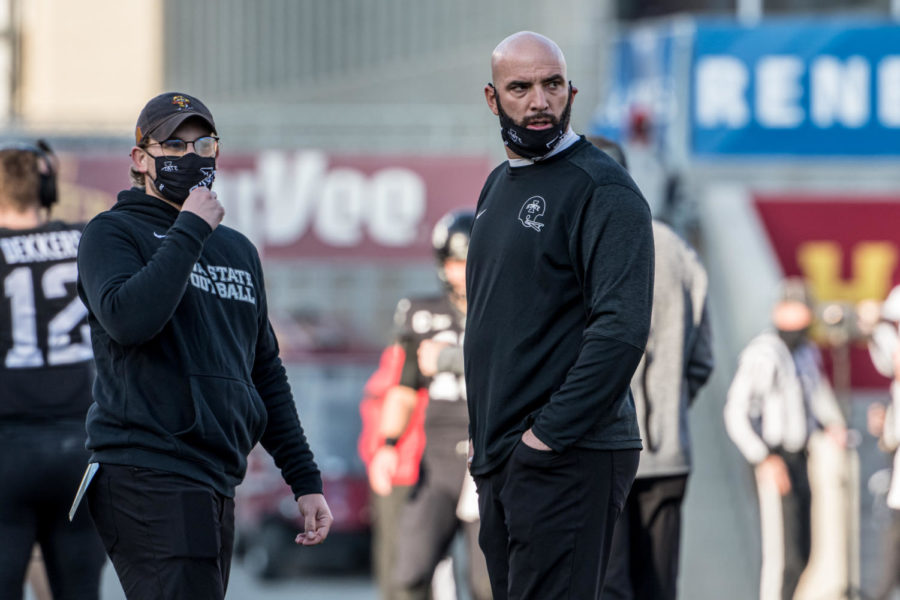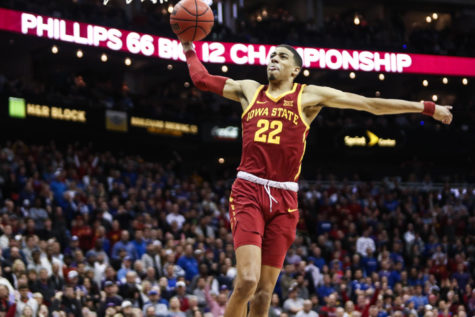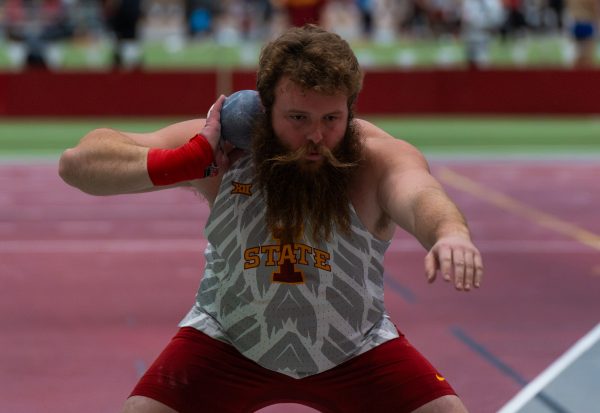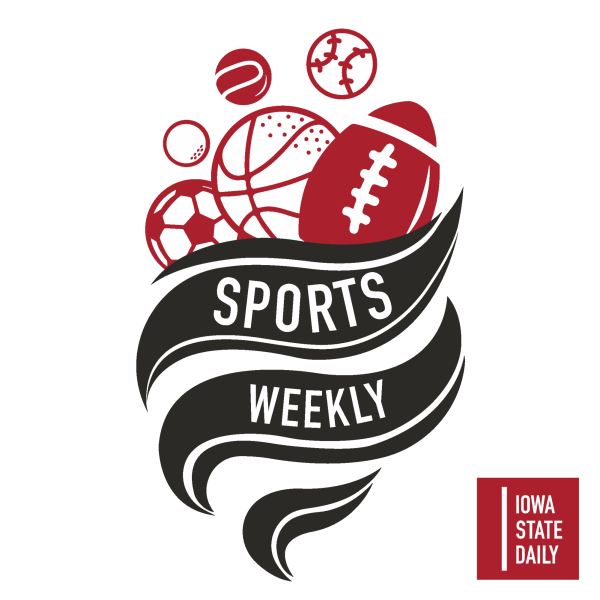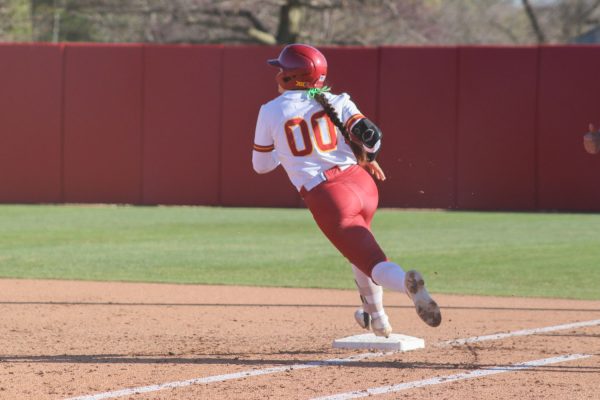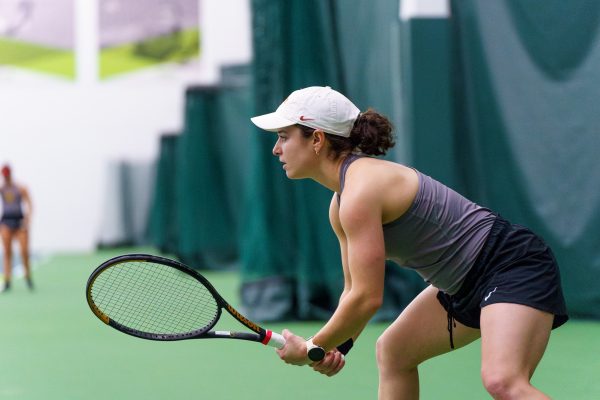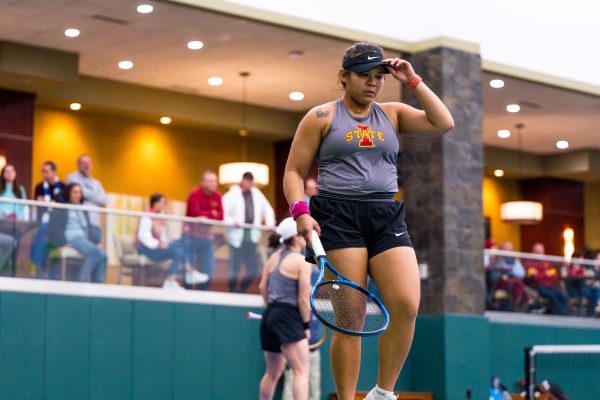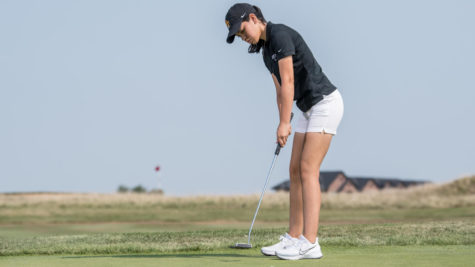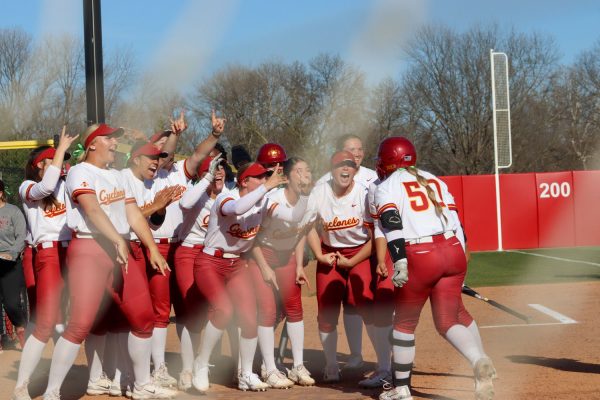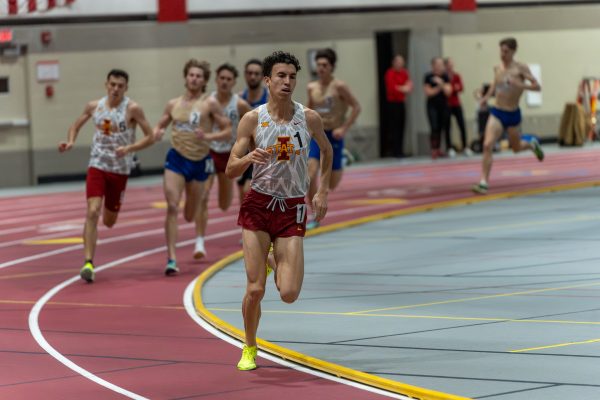Iowa State’s growth in the weight room this offseason
May 11, 2021
The Iowa State football team’s main goal during the spring practice period has been simple. Get, “Bigger, faster, and stronger.”
Leading this effort behind the scenes has been strength and conditioning coach Dave Andrews, who has earned nothing but praise from his peers since joining the coaching staff before the start of the 2020 season.
While the goal may be simple, it’s not necessarily a simple path to get there.
Andrews told reporters last week that body composition has been at the center of his message to the players and that they’ve responded well to that.
“I think that the guys did an outstanding job, a lot of those qualities we talked about,” Andrews said. “Getting faster, getting stronger; I wouldn’t necessarily say getting bigger, because we still need to refine some things with certain guys to improve their body composition. So it may not be getting bigger, but maybe becoming more efficient.”
Iowa State is not Andrews’ first stint with directing a strength and conditioning program. Prior to joining Iowa State, Andrews’ was the head strength and conditioning coach at Pittsburgh from 2015-19 after serving as an assistant strength coach at Notre Dame (2014), Illinois (2012-13), and Cincinnati (2005-11).
Andrews said the main goal he had on day one for this Iowa State program was to evaluate what the players were like and to lead them to grow from there.
Since his first day on the job at Iowa State, Andrews had a significant challenge.
Andrews was brought on to the staff in an offseason where Iowa State couldn’t have spring practices and couldn’t begin voluntary workouts till June 15.
The biggest challenge he had during this time, he said, was establishing relationships with the players.
“We were installing the new system. So anytime you have a different system, there has to be trust in that, and we were really trying to establish those relationships,” Andrews said.
Part of that new system that Andrews established in the fall was a new motto that the staff adopted, 30 days of preparation for 12 guaranteed opportunities (to play football).
This means putting 30 days a month (or how many days are in said month) to prepare for the 12 regular season football games every team gets.
“We talked about 30 days of preparation for each guaranteed opportunity,” Andrews said. “What we choose to do in January is going to make the difference in August.”
This idea also goes along with working on pregame and postgame things as well.
“As we’re closer to the game or when you’re in-game week, we also have to be aware of how much we (the players) have left, how much tread we have left on those tires,” Andrews said. “So we just really have to go ahead and manage those things and ultimately, make sure that those guys take care of what they need to form a tactical sense with their coaches but from a physical sense. It is about making sure that they’re optimal and Saturday as close as we possibly can be to optimal.”
A key aspect of this growth and development in the weight room is nutrition.
This could include pre-workout meals, post-workout meals, as well as education on what foods do certain things to the body.
Andrews said that part of his job, as well as Director of Sports Nutrition for Football Rachel Voet’s, is to educate players on nutrition.
“She has done an outstanding job with the education portion (of nutrition),” Andrews said. “Rachel is simply an extension of my staff, and I am an extension of her’s so to speak.”
“You are simply coaching them on what they eat, how much the quality of those things are and with all of these things, we say with growth, and for growth, you need time for that,” Andrews said.
Throughout spring practice, coaches, including head coach Matt Campbell, as well as some players, have raved about the progress that is being made in the weight room.
“I think the goal was to get bigger, faster, and stronger. I think when we came back from the bowl game, I think that was a priority with coach Campbell and coach Andrews and his staff, as well as our staff here on offense and defense,” Iowa State defensive coordinator Jon Heacock said.
The biggest difference that the coaches have noticed in the players is their physique. Iowa State offensive coordinator Tom Manning credits this to Andrews and Voet.
“I think coach Andrews could probably speak to the numbers and absolute strength, but I think we’ve noticed a change in body composition to the naked eye,” Manning said. I think you certainly look at the guys you’re like, ‘Man, these guys have done a lot,’ they’ve worked really hard, and I think a lot of credit goes to coach Andrews and his staff.”
Manning also praised what Voet has down for the team as well.
“Rachel has done a tremendous job in helping our guys nutritionally, not only with what the services we provide there but also with the education,” Manning said.
For certain players, this has meant that they’ve added muscle.
Take, for example, redshirt junior Will McDonald IV. The Pewaukee, Wisconsin, native, who led the nation in sacks with 10.5, weighed in at 230 pounds for most of the 2020 season but will now weigh between 245-250 during the 2021 season, according to Andrews.
The cornerbacks have also appeared to have put on some muscle as well.
Cornerbacks coach Matt Caponi previously said seniors Anthony Johnson, Datrone Young, and sophomore T.J. Tampa have all put on 10-12 pounds.
First-team All-American and the Big 12 Offensive Player of the Year Breece Hall has also improved his physique, according to Andrews.
“From a physical standpoint, Breece has put on some lean mass, you will see the potential for him to have a bit more horsepower,” Andrews said. “But at the end of the day, I will tell you this, we all know that the mind really runs the body and I think as he continues to evolve, you’re going to see a more professional version of him.”
These specific examples of players making improvements to their bodies would suggest that there has been a buy in from the players on what the strength and conditioning staff is doing.
This type of buy-in something that Andrews and Campbell said they’ve both seen.
Campbell credits the team’s upperclassmen for this.
“I think the leadership of our team deserves a lot of credit, when your great players are bought into ‘how do you recover? How do you take care of your body? And then how do you come in and be your best in the weight room or the best on the football field day in and day out?’ That there’s a lot of buying value when your best players are willing to commit to that,” Campbell said.
Campbell says the team has bought into the nutrition and has taken ownership in that area.
Iowa State is coming off of its best season ever as it made it to the Big 12 Championship for the first time and won it’s first-ever New Year’s Six Bowl Game en route to finishing in the top 10.
Now with a full spring practice and a full offseason, in addition to having 19 out of 22 starters returning from a season ago, Iowa State has the chance to go heights it’s never been before and continue to grow as a program.
The growth likely hinges on the development of the team’s strength and conditioning.
“Last season, you got it (the offseason) cut short, we really didn’t have three months where that was even a factor in our program, and so I think that was totally negated more than anything,” Campbell said. I just think that commitment that we’ve been able to make as an athletic department, and certainly as a football program, to getting the right people in the right place and then obviously, making those things a priority in our program. It’s been a global, I think, global commitment to making sure we’ve got the best resources to give our players the best opportunity to be as successful as they can be.”

